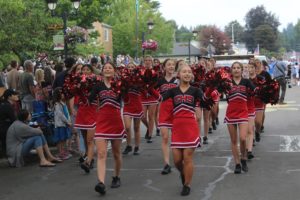Washougal Fire Department and East County Fire & Rescue have sent a handful of personnel to fight wildfires in central Washington over the last month.
Washougal sent four of its firefighters, including two paid staff — Butch Steigmann and Chris Kassel — and two volunteers — Adam Strobeck and Rick Nieto — to the Taylor Bridge wildfire in Cle Elum.
ECFR sent three to Taylor Bridge, including Fire Chief Scott Koehler, Deputy Fire Chief Dean Thornberry and Finance Manager Tammy Dinius.
Koehler and Thornberry were sent out to Brewster almost a month ago. On their drive home, they were called to help at a fire in the Okanogan-Wenatchee National Forest.
The Taylor Bridge Fire has lasted two weeks and was the biggest fire problem in America for three days, according to Koehler. More than 50 homes have been damaged or destroyed. At one point, more than 400 homes were threatened. The wildfire has burned more than 23,500 acres of land.

